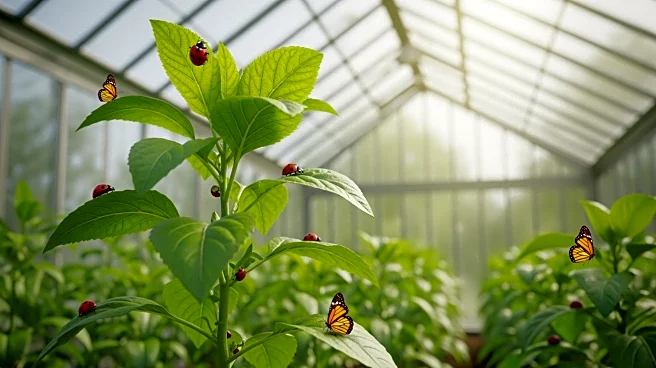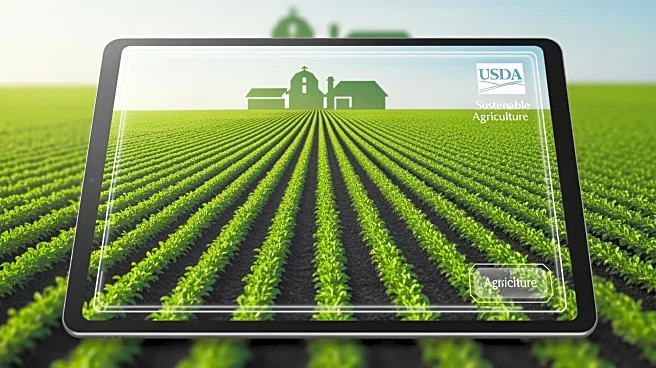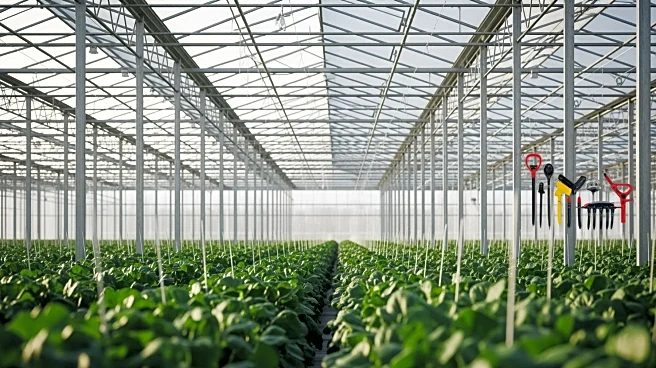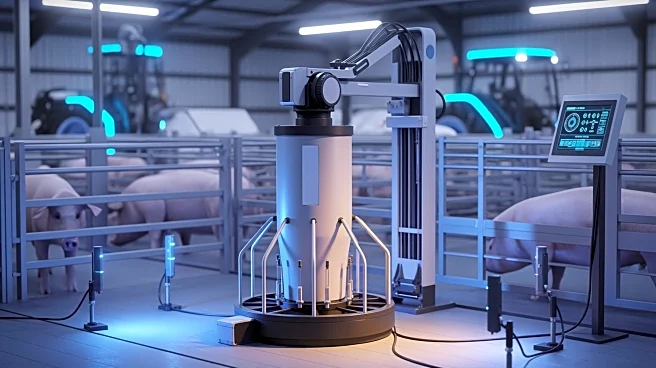What's Happening?
Agriculture drone spraying is gaining traction as a method for applying pesticides, herbicides, fertilizers, and other treatments over agricultural fields using unmanned aerial vehicles (UAVs). These drones
are equipped with tanks and spraying mechanisms to ensure even distribution onto crops. The technology is being increasingly adopted due to its precision and operational efficiency, with the market projected to grow significantly. The crop spraying drone market is expected to reach $3.41 billion in 2025, up from $2.47 billion in 2024, with a compound annual growth rate of 38.3%. This growth is driven by precision agriculture practices, labor constraints, regulatory developments, and sustainability initiatives. Drones are programmed with flight paths using GPS and mapping software, allowing for accurate coverage and real-time adjustments based on crop conditions.
Why It's Important?
The rise of agriculture drone spraying is significant for U.S. farming as it offers numerous benefits, including reduced chemical use, minimized environmental exposure, and improved worker safety. Drones can operate in challenging terrains and provide quick deployment for time-sensitive applications, potentially lowering operational costs compared to traditional methods. The technology supports precision agriculture, which is crucial for sustainable farming practices and addressing labor shortages. As the market expands, it could lead to increased efficiency and productivity in the agricultural sector, impacting food production and resource management. The integration of AI and IoT in drone technology further enhances its capabilities, making it a vital tool for modern farming.
What's Next?
The future of agriculture drone spraying involves several technological advancements, including automated variable rate spraying and adaptive spraying technologies. These innovations allow for dynamic adjustments based on field conditions, improving efficiency and effectiveness. Advances in battery technologies and alternative power sources, such as hydrogen fuel cells, are expected to extend flight times and payload capabilities. The development of swarm technology, where fleets of coordinated drones provide large-scale spraying solutions, is another area of focus. These advancements align with sustainability efforts and evolving regulatory frameworks, promoting environmentally responsible agricultural practices. The market is expected to continue expanding, driven by technological innovation and greater accessibility.
Beyond the Headlines
Agriculture drone spraying presents ethical and regulatory challenges that need to be addressed for widespread adoption. Regulatory compliance is essential, as drones must adhere to aviation and agricultural standards. Safety concerns, privacy issues, and environmental impacts are also critical considerations. The upfront costs for purchasing, training, and maintaining drones can be significant, particularly for smallholder farmers. Addressing these challenges through supportive policies and targeted training programs will be crucial for maximizing the role of drones in future agricultural practices.











